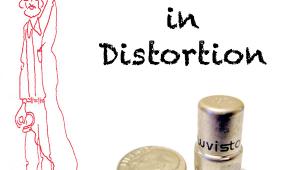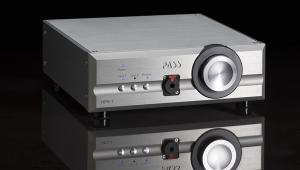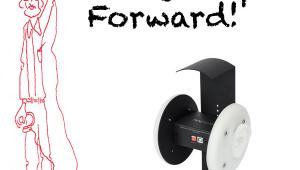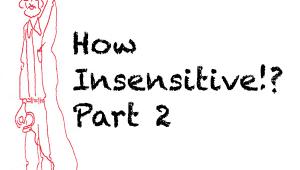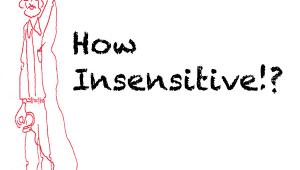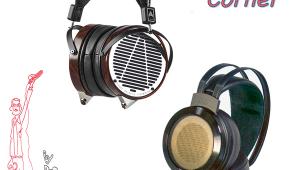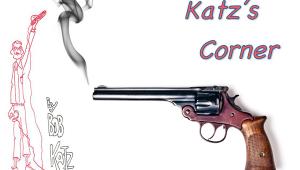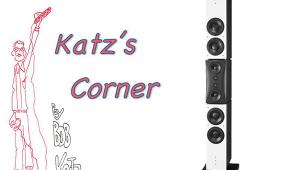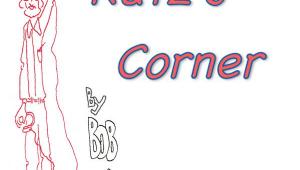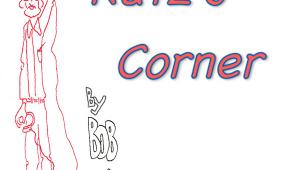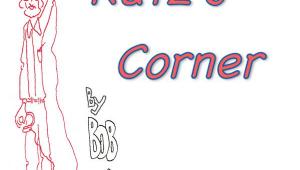| Columns Retired Columns & Blogs |
Katz’s Corner Episode 13 - The Big Shootout: Audeze LCD-4 vs. Focal Utopia
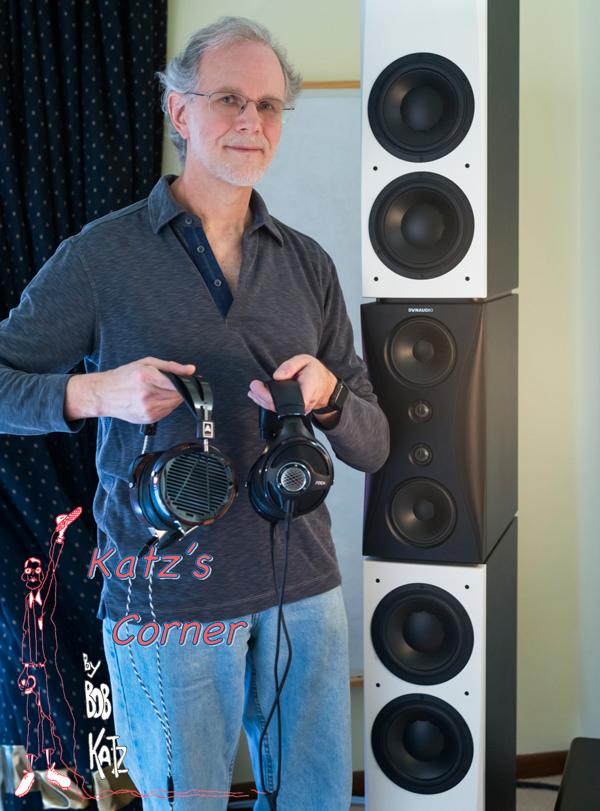
This story originally appeared at InnerFidelity.com
[Editor's Note: Through a long and tedious process it was found that the Focal Utopia and Audeze LCD-4 reviewed here at InnerFidelity in numerous articles were found to be not representative of currently manufactured product. This article is therefore not entirely indicative of our current impressions of this product. To get a complete understanding of our evaluation the reader should start with this summary article and work back through the articles leading up to our current understanding.]
Introduction
In my previous episode, I threw down the gauntlet: Can the world’s best headphones hold up to the world’s best loudspeakers in a perfectly-treated room? Of course we know that headphones image completely differently from loudspeakers. The transient impact of transducers lodged on your ears is distinctly different from loudspeakers at 9 foot distance. The loudness ratios of forward and distant elements, direct and reverberant sound are also different between phones and speakers. But we certainly can compare the tonal accuracy of the two presentations.
My standard of reference always will be the tonality of real life, which is the standard I use to adjust the high frequency rolloff of my Dynaudio loudspeakes. I’ve invited several colleagues to participate in this listening test, and they have the luxury of comparing the headphones under test to a set of highly-calibrated Dynaudios. This is the most natural-sounding and accurate loudspeaker system/room I have constructed in 46 years of audiophile and professional life. The heart of it is a pair of Dynaudio Evidence M5Ps coupled with a pair of JL Audio Fathom F112 subwoofers. The system is digitally corrected and crossed over with a linear phase crossover using Acourate Convolver. It has been time aligned, impulse-response-corrected, and phase-corrected using FIR filters. In layman’s language this means that the depth, impact, and transient response of the loudspeaker system are incomparable.
The digital correction system is also my monitor level controller, running at 64-bit floating point, and dithered to 24 bits on the way to the DACs, which in layman’s language means that the volume control is sonically transparent. The high frequency target for the Dyns was determined empirically by listening to a set of about 50 high quality reference recordings. This target rolloff makes the tonality fall right in the middle so all the reference recordings sound neither too bright nor too dull, and most of the recordings sound just right, with no temptation to adjust any tonality. A perfect system to compare against the world’s best headphones! So, how do the world’s best headphones stand up to these fantastic loudspeakers? We’re about to find out.
I am fortunate to have a good friend who has loaned me the Focal Utopias for five days for this shootout. The Audeze LCD-4s are my own recently-purchased pair. My music source is JRiver Media player, feeding Acourate Convolver via 64-bit ASIO. Acourate Convolver adjusts monitor level and dithers the signal to 24 bits. I could skip Acourate Convolver for the flat headphone tests, but it is needed to run the filters for the loudspeaker correction so may as well keep it in the digital chain and it is audibly transparent. Acourate Convolver then feeds my Oppo HA-2 DAC through USB.
I’m using the low source impedance headphone output of the DAC to feed via line level to two headphone amplifiers through a Y-cord. It simultaneously feeds my custom-built AMB headphone amp and an Audeze Deckard. The analog gains of the AMB and Deckard have been carefully matched to produce equal perceived loudness for the Focal Utopias and Audeze LCD-4s. That way the listener can instantly switch from one headphone to the other at precisely matched loudness. Our procedure was to play each musical selection from the beginning at least through to the first chorus. Then repeat the song with the other pair of headphones. To reduce listener prejudice for the first headphone auditioned, we alternated playing either the Focal or the Audeze first.
The AMB is feeding the Focals and the Deckard is feeding the LCD-4s. I had to make this choice since the 200 ohm LCD-4s are very insensitive and require considerable extra analog gain, which is available in the Deckard but not in my AMB. In case anyone cries “foul” about my choosing a commercial amplifier to feed one headphone and a custom amp to feed the other, I’ve gone to great lengths and listening tests which demonstrate to everyone’s satisfaction that both amplifiers are sonically equivalent. Sonically neutral in fact as far as my ears tell me. I had brought the custom AMB amp to Tyll’s great headphone and amp shootout in Bozeman, and both Tyll and I agreed that the AMB is not only first rate, but that it killed nearly every commercial amp in terms of transparency, naturalness, accuracy and extension, both low and high end. Perhaps things would be different if the Deckard had been available in Bozeman, because I am equally impressed with its transparency, impact, neutrality, purity of tone, separation and extension. In other words, the Deckard and the AMB are as alike as can be.
As a test, I’ve moved the Focals back and forth between the AMB and the Deckard with matched loudness and I cannot distinguish the sound of the two amplifiers. My intern and audiophile Matt Davis performed the same test and he agrees 100% that the two amplifiers are probably indistinguishable. Both have excellent headroom and output power. And so I am confident that any sonic differences we hear are due to the headphones and not the amplifiers. All listeners also agreed that I have matched the two headphones’ loudness perfectly, which is very important for a listening test, and virtually impossible to perform repeatably with a single amplifier, given the greatly different sensitivities of the 80 ohm Focal Utopia and the 200 ohm Audeze LCD-4s. You know it’s not the impedance that’s important, but actually the voltage sensitivity. But we do know that the higher the impedance, the lower the current driving the circuit traces and thus more voltage drive is necessary to produce a given loudness.
In this episode you’ll hear my opinions and in the next episode I’ll introduce my other critical listeners, who are more than happy to give their opinions. Photographer Mary Kent was kind enough to produce lovely formal portraits of the participants with her Nikon and excellent eye.
Besides the LCD-4 and Utopia, en passant I will compare my Oppo PM-3 cans. In another episode I’ll present a comparison of the headphone winner of this contest against my Stax 007 Mk2 fed by a KGSS amp. When I received the Focals I did some initial listening tests to ensure they appear to be performing properly and was surprised to find the right channel driver to be 1 dB more sensitive than the left! The center image was shifted slightly towards the right. This should never be the case for a premium headphone, which should pass manufacturer’s muster with precisely matched drivers. I performed extensive elimination tests to prove the issue is not connections, amplifiers or ears and am positive the balance issue is in the sample of Focal headphones that I received. Consequently, I made a separate preset for Acourate Convolver which drops the right channel 1 dB whenever we’re auditioning the Focals. With the 1 dB adjustment, mono pink noise precisely and tightly images in the center so the left and right ears of the Focals are tonally matched. I am confident now that we are accurately hearing the sound of Focal drivers with no issues that would prejudice judgments of imaging, depth or soundstage. On the other hand, the left and right ears of my LCD-4 are matched in all respects. That was not the case with one of the other Audeze units I’ve auditioned, which also has a slight channel imbalance, so it appears that even premium headphones may be subject to variance. Audeze has considerable quality control, and I doubt that a balance issue gets out of the factory very often.
Weighing In for the Title Bout
I performed this formal evaluation at three different times, the first a couple of weeks after I got the LCD-4s, the second as soon as the Focal arrived. The third formal listen occurred after Aaron Gandia and Matt Davis had tested the headphones so my personal grades may have been influenced by their reactions. I’ll do my best to sort these factors out and let you know as we go on. Also keep in mind that since I am the proud owner of the Audeze and the Focals are a loaner, my preferences may be prejudiced by my bank book! But I’ll do my best to be objective.
Bob’s first listen, the LCD-4’s versus the Dynaudios Loudspeakers with a tetch of the Oppo PM-3 in the Mix
First song is one of my favorite demo pieces: Angelitos Negros, from Alejandra Robles album “La Morena”. I’m playing my 2496 master. Her CD may still be available. Alejandra is a trained contralto opera singer performing popular Mexican latin music. This song is particularly challenging as Alejandra sings high notes with a semi-operatic feel, which can get harsh on a lesser playback system or an inaccurately-adjusted system. On the reference Dynaudio speakers, her voice sounds clear, pure and natural, and not fatiguing, exactly as I mastered it. There is also a full complement of electric guitar, fiddle, electric bass, and other melody and harmony instruments, along with latin percussion, congas, including a deep, throbbing bass drum, a great challenge for any reproduction system.
LCD-4 - This listen was performed without direct comparison with the Focals which had not arrived at the time. The bass drum is solid, deep, punchy, accurate compared to the loudspeakers. Perhaps the LCD-4 is exaggerating the extreme bottom a bit compared to the loudspeakers. The high hat is accurate. Bass instrument is accurate. The sound is very satisfying, dynamics are excellent, very moving. Vocal sound is accurate, with no extra sibilance, mirroring its tonality from the speakers. Fiddle is just right. Purity of tone is excellent. I do not feel the pressing need for EQ, unlike any previous headphone, amp or DAC combination I’ve tried here. Even my Stax need some bass boost and treble cut, so I’ll be interested in comparing the LCD-4s to the Stax in another blog, both with and without compensating EQ.
Bass may be a little extra around 55-80 Hz, but this is very minor, not enough to make me reach for EQ as the sound is not boomy or muddy, just a little on the “entertaining” side. There’s an electrostatic-like transparency and extension with these dynamic (Planar Magnetic) cans that I have never heard with previous Planars, even equalized. They are extended in the bottom and top octave that I have not ever heard from the LCD-2, -3, or –x. This is truly Audeze’s statement headphone, a radical improvement over any previous Audeze, with the lightest diaphragm Audeze has ever made.
LCD-4 versus Oppo PM-3 - Some of you asked me to compare these cans with the Oppo PM-3, which I still consider a rave headphone, especially at $399. Read my blog/love affair with the Oppo which began in Episode 10 and continues through Episode 11. I found the sound through the PM-3 is a little veiled compared with the LCD-4 but still the Oppos are an excellent portable experience. Compared with the large, circumaural LCD-4’s, the image thrown by the Oppos is smaller. To be honest, in an immediate comparison, the PM-3s sound shockingly wimpy. But what would you expect comparing a small $399 phone against a $4000 behemoth? The LCD-4 is more open and extended than the PM-3. EQ on the PM-3 would bring them more in line. But the LCD-4 is clearly in another league, and I must admit makes the PM-3 sound wimpy, probably because of the large image, visceral bass and more open sound of the LCD-4. I hope after a day away from the Audeze I’ll be able to appreciate the virtues of the PM-3 again. I don’t want it to become my lost love! I suspect the PM-3 is a bit too “flat”... but I still would not kick the PM-3 out of bed as it’s so much more tonally neutral than any of the under-$500 “best of the pack” phones I tested in a previous blog. And I do run it with a rising high end EQ in my Iphone’s high res Onkyo player.
The Oppo HA-2 headphone amp cannot adequately drive the LCD-4’s. Their sensitivity is so low that the Oppo amp goes into distortion and perhaps clips when trying to drive them loudly enough. In fact, this new 200 ohm version of the LCD-4 is so difficult to drive that I recommend at least a 3 watt amplifier of exceptional quality and transparency, preferably 4 watts. I tried the revered O2 amp from my collection and it couldn’t cut the mustard either. The Burson subsidiary Lycan test amp is able to do the trick more or less, but it’s not in the same league as my AMB or the Deckard. The Audeze Deckard is a great, transparent sounding match for the LCD-4, fortunately, as I have one on loan and intend to buy it.
Next song is Donald Fagen’s Morph The Cat from that 2006 album. I’m playing the 2496 from HD Tracks. As usual, we get impeccable, infectious performance and great production as we would expect from this Steely Dan alumnus. This is a highly recommended demo piece for pop music fans.
LCD-4s - Nice phasing effect in this mix. The bass goes down to the center of the earth! The vocal has perfect level of presence. The snare drum has great punch and snap. I have no idea if I could replicate this experience in the Stax, even with EQ. We’ll see about that in another episode. The sound is rich, clear and extended from bottom to top and is transparent and revealing. Maybe I’m into my love affair with my new purchase, but I truly believe I’m being objective.
Counting Crows, live version of Hard Candy, my 2496 master. I don’t know if this has been released, but it’s a fabulous live rock cut and I have to tell you my reactions to this on the LCD-4. I notice that the Dynaudios sound brighter on this cut than the LCD-4’s around 8 to 10k, but below that, the tonality is very similar. The Dynaudio speakers have more snare impact than the 4s, perhaps because of their first order crossover and phase linear (corrected) impulse response. It would be very interesting to develop a phase and impulse correction filter for headphones, but very difficult to figure how to set it. I prefer the loudspeakers for all that they do—big sound in a big room, but the tonal difference between phones and speakers has gotten a lot closer with the LCD-4s than any other can I’ve auditioned so far in this room.
Blackbird, by Cassandra Wilson, from her Silver Pony album, which is available as a CD. I played my 2496 master. Cassandra is a Grammy winning jazz artist. Her contralto voice is surrounded by New Orleans’ best jazz musicians on this album. Her vocal sound is warm and beautiful on the cans, just as I remember it from the loudspeakers. There’s still plenty of presence and clarity on the LCD-4s to satisfy, and plenty of body and power in both headphones and speakers, so they are both superb references.
Daft Punk, from the album Random Access Memories, 2488 from HD tracks, Give Life Back to the Music: This sounds full and strong on the LCD-4s.
Next up, Deepest Crystal Black, by IceCocoon, from the album of the same title. This is the Bob Katz 2496 master. This recording of a hard rock group has a drop-tuned bass (tuned to D) that goes very deep. On the Dynaudios, it sounds big and clear and has a huge soundstage, is very satisfying. I estimate Bass fundamental goes down to a remarkable 30-40 Hz. The loudspeakers eat the headphones for lunch, with their visceral power that hits you in the chest and spatiality which fills the room (I’ll take credit for producing much of that quality, along with the excellent mix from producer Owen Gillett). Still, back to the LCD-4s, if I did not have a superior loudspeaker system and room I would be in heaven with these phones. Unfortunately the close to the ear presentation misses some of the ambience and space of the loudspeakers, but if you are a fan of detail you might prefer the cans, except missing the punch that the speakers throw to your body and the feel of the room. This resonant, strong, hard rocking recording just kills on loudspeakers but on the headphones, it’s a different mix.
Jaclyn Guillou, Cry Me A River, my 2488 Master. From her jazz album “This Bitter Earth”. This young jazz singer really emotes, highly recommended. She performs with a small combo and in some songs with strings. The CD is available.
On the Dynaudios: Jaclyn’s vocal has perfect presence in the Dyns, as would be expected, since the recording was mastered in this room (on my previous Revel loudspeakers, which were no slouch). Bass instrument is a little light but that’s the way it is on the master because when I tried to bring up the bass instrument during mastering it muddied up the vocal. Mastering is the art of compromise, and since Jaclyn is the star we must not compromise her voice. The snare has nice pop and spatiality. The tenor solo is rich. There is not much stereo separation in this recording. Cymbals are there in the room, and not close miked.
On the LCD-4s: The vocal is warmer and the whole presentation is warmer than on the loudspeakers. This makes me think that we may need a tetch of EQ boost in the low treble in the LCD-4s to match the speakers, and I mean just a tetch! Anyway, I’m completely satisfied, bottom to top. Depending on your taste you might like a few tenths more at 8k-11k from these cans, but in my opinion this is completely optional. Switching back to the loudspeakers for a moment: It’s very satisfying. There’s more tonal and dynamic similarity between these two excellent playback methods than there is difference. Let’s keep in mind these loudspeakers retail for $60,000, compared to a pair of $4000 headphones, quite a savings!
Which brings up the question: at what price and quality point would you consider a pair of headphones to be superior to a pair of loudspeakers? Frankly, many apartment dwellers and home listeners are not able to have a loudspeaker system that would approach the quality of these headphones. Room acoustics are difficult to control and there’s much to be said for a great set of headphones. Frankly, I’m privileged to have both available to me. If you like detail you’d go for the LCD-4’s, which have better inner detail than even these fine loudspeakers. I can see why Audeze considers the LCD-4 to be their statement product, especially the 200 ohm new model, and Audeze will upgrade any of the older 100 ohm models.
Flip Flop and Fly, by Joachim Palden, Bob’s 2496 master. From the jazz album “Guilty”. This is a down home rocking electric blues number that really pops in the low end. Highly recommended. The CD is available.
LCD-4 - It sounds beautiful. Bass drum and toms rock. The impact and punch of the acoustic bass is marvelous. This is a warm, fat recording with amazing transient impact that shows off the virtues of these cans. Switching to the loudspeakers: Surprisingly, I prefer the presentation on the cans to the loudspeakers! That’s because there is little depth on this recording; on the cans, the bass instrument and drums make your head soar. This is more of a visceral experience on the LCD-4s than on my loudspeakers! Sure it sounds great on the speakers but in a more intellectual and less involving way. Clearly this intimate recording is very suited to cans. Spatiality is not the message of the Palden recording, as opposed to the spacious and big IceCocoon cut. You don’t play the Palden recording to experience audiophile space and depth. You play it to move your body to the punch of the music, so having everything up front in the cans is a virtue, not a liability.
General Comment on the LCD-4’s versus Calibrated Dynaudio Speakers
J. Gordon Holt taught us that if we don’t get the midrange right, nothing else is right. Well, the midrange tone exactly matches when switching between my calibrated loudspeakers and the LCD-4’s. The tone of vocals is perfectly matched. I am confident that Audeze has gotten the critical midrange just right. For extreme highs I must give the edge to the Dynaudio tweeters, for the extreme lows I vote for the chest-slamming impact of the JL subwoofers. Yet there is a close finish in the competition for the most satisfying bass drum pop. The presence range (2k-6k) is very comparable between the two. The low treble around 6k-10k in the LCD-4 are a bit attenuated but not in an unacceptable manner: these cans are not even a close relative to the LCD-2s, 3s and X’s in the range above 6k. So do not use your previous Audeze experience as a guide to how well the LCD-4s are going to reproduce high frequencies. The LCD-4s are the first headphones from Audeze that I feel have a completely satisfying upper mid presence and high end. I’m not using any EQ at this time, but in later blogs I’ll experiment with some EQ. Cymbals are present and extended on the LCD-4s. If the HF in these cans is down, I wager it’s not more than a dB. Nice diaphragm, Audeze!
Bob’s First Listen to the Focal Utopia compared to the Audeze LCD-4
The Utopias have arrived, in a deluxe black cardboard case, but the case is not as impressive or functional as the rugged Pelican travel case that Audeze supplies with all its headphones.
These next tracks were auditioned after I interviewed Matt and Aaron so my reactions may be a bit colored by their influence, but I believe my judgments are independent. First up is a very special jazz audiophile recording on Chesky Records, engineered by Nick Prout, from HD Tracks at 2496. This totally acoustic live performance with intimate audience is to die for, very naturally recorded largely with a single point stereo microphone. The song is called You Lied from the album “Blues and Grass”, starring James Ulmer, Queen Esther and the “52nd Street Blues Project”. Dynamics of this recording and tonality are very natural, every instrument and element sounds alive. Queen Esther’s voice sounds startlingly real, unamplified, in a bluesey, smokey club atmosphere. The small audience’s claps are holographically presented. It’s an absolute reference for any stereo system.
LCD-4 - Bass instrument is coherently located midway between center and right with excellent ambience around the instrument. Claps and finger snaps are wonderfully delineated in full width with nice room ambience around the claps. Vocal is warm and clear, perfectly in the center, not in your face but spaced out in the room in a natural way. Bass instrument has more growl than fundamentals as it is an unamplified acoustic instrument at a moderate distance from the main mike. This recording sounds very real and alive on these cans.
Utopia - Bass is alive and I don't notice any immediate reduction of deep fundamentals, probably because they are not there in this recording to begin with. Vocal is centered but much more up front than with the LCD-4. She has maybe more presence than on the Dynaudios, but since the recording is so natural and warm, the extra presence doesn't annoy me and can easily be interpreted as “more there there”. Claps seem attenuated compared to the LCD-4. Vocal range is not as microdynamic as the LCD-4. The ambience around the vocal is less than with the LCD-4, so there is less “there there” in the critical ambience and space. The bass solo is more forward and has less ambience as well. My preference is slightly for the LCD-4 but on this great recording both headphones shine.
Next song is Here We Go Again, from Ray Charles’ luscious album “Genius Loves Company”, the 10th anniversary remix produced by maestro engineer Al Schmitt. This album is highly regarded for its music and sound. We played the 2496 master files from HD tracks. This track features both male and female singers (Norah Jones) and is a dual challenge to see how the two headphones reproduce male and female vocals. Schmitt must have used the world’s best microphone for each singer because the two vocals have excellent presence, warmth, and natural quality as revealed on the Dynaudios.
Focal - Norah's vocal is very forward, but still pretty warm. Bass is thick, a little muddy and a little loud. I can tell Ray is left of center and Norah a little right of center. There isn't a tremendous amount of reverb around the vocal or instruments. I don't hear as much presence in either Norah or Ray’s vocals as I remember from the loudspeakers. Billy Preston's organ solo seems to come predominantly from the left side where the high frequency Leslie horn is panned, as if there is a sharp tweeter on the left ear, but neglecting to some extent the low frequency portion of the Leslie that's supposed to be on the right side. The snare drum is a bit tinny and missing its body and fundamental and seems a bit attenuated compared to the loudspeakers and LCD-4s.
LCD-4 - Very rich opening, it grabs me from the first note. Norah's vocal is more centered than in the Focals...and is warmer. Ray's vocal is slightly left of center and Norah’s more centered, and I think that’s intentional. The bass instrument has more pluck and definition on these cans and is quite clear, not muddy like it was on the Focals. When I switch to mono in Acourate Convolver, the sound is perfectly centered so the amp and phones are right on balance-wise. Billy Preston's organ solo has a more stereophonic effect on these cans than with the Focals, with the high and low Leslie participating more equally on left/right side of the stereo image. If I were the mixing engineer, that’s the way I would balance it so I think the LCD-4 reflects Al Schmitt’s intent more accurately. The snare is clear and tight and in a good proportion with good body and fundamental.
Next song is I Lost My Girl From Memphis by the FB Pocket Orchestra, using my 2496 master. This album, called “Guerilla Jazz”, is available on CD. FB Pocket Orchestra is a trio performing exciting 20’s and 30’s swing jazz. It’s an impressive little group, with an infectious melody that will create an ear worm—it’s running in my head right now. Combining a charismatic female vocal with clarinet, acoustic guitar, trumpet, tuba, piano, banjo, and percussion, it’s recorded in a very pure and natural way. I urge you to ask the group to make the 2496 masters available for purchase.
LCD-4 - Muted trumpet is perfectly centered, warm and luscious. Tuba is clear and you can hear each note but it does not go down very deep, exactly as I know it from the speakers and my master. The vocal is warm and clear. Stereo separation is gorgeous with percussion and stringed instruments spread left and right. The duet between trumpet and piano is perfectly balanced. The tuba solo is gorgeous in the center. Guitar solo on the right is nicely and correctly balanced by the level of the tuba accompaniment. The clarinet left of center is warm and not strident. The tom solo à la Gene Krupa is gorgeously clear and delineated with the high hat perfectly defined over on the right.
Focal - Trumpet is slightly right of center. Maybe my 1dB of compensation was not quite enough. Clarinet is left of center and has more presence than the presentation on the LCD-4s. The clarinet harmonics actually sound more real on the Focals, however the Dynaudios reveal that the clarinet does not have much presence, so I conclude the Focals must be giving a slightly exaggerated harmonic impression. The vocal is not as rich as it is presented on the LCD-4s. The drum solo doesn't have the magic punch that it had with the LCD-4s but it is still pleasant.
If I didn't have the LCD-4s to compare with I would be quite satisfied with these Focals using this reference quality recording. Overall on this recording the Focal seems a bit colored or boxey but not unpleasantly and only by a direct comparison with the more natural-sounding LCD-4s which I judge to be a hair superior. But I would not kick these Focals out of bed, even with this bright recording. Personally I wouldn't choose them, but if you are a fan of detail in recordings I recommend that you audition them and see for yourself which headphones you prefer.
Next song: Lindsey Webster, Back To Your Heart. My 2496 master of a kicking jazz piece. This song is from Lindsey’s Jazz/Soul album of the same title, which has reached number one on the Billboard charts. It’s a great recording, with perfect arrangement, performance and sound by a consummate electric jazz group and mixing by Mark Gray. Lindsey’s voice can get a little edgy on peaks of some songs which I know is in the original recording. This does not deter the listening enjoyment, so not to worry. The five or six string electric bass, going down quite deep, is one of the stars of this pop-jazz performance.
Focal - Bass instrument is deep and strong. Cymbals are strong. Vocal, which I know to be warm, is warm on these cans but the sibilance is stronger than I know it to be on the Dynaudios. Ride cymbals are a bit tizzy, in your face around 12k, revealing a treble emphasis in these cans. Vocal is just a margin right of center, so now I know I could have used perhaps 1.1 dB of attenuation on the right channel in Acourate Convolver for this sample of the Focals, but this is very minor. Background vocals seem attenuated compared to what I remember from the loudspeakers. The sound is not very rich in the low mids, but I know it should be richer based on the Dynaudio presentation. Guitar solo is pretty and the back beat snare pops. Overall I like what I hear, but it seems a bit like a pastiche of real sound. Lindsey sounds just as sexy here, so I would not kick these Focal cans out of bed; if I did not have the LCD-4s to compare I would be impressed. The presence issues that I think exist in the Focals are not emphasized in this warm and full recording.
LCD-4 - Bass fundamental grabs me; it goes down to the center of the earth, as I know it should based on the mastering. Ambience and space are stronger and more obvious than on the Focals. Vocal has a very nice full lower midrange and body as I know to be on the master recording. When she goes to the B part the cymbals fill in the highs, not the presence of the vocal, as it should, but on the Focals I heard more presence on the vocal B part than I think is in the master. There is not enough somewhere around 11k, and I think there is the weak link of these cans. Maybe the cans have a little dip around 11k which is restored around 15k since I do hear the air of the cymbals, just not not quite enough presence circa 11k... I need to play around with just the right EQ. But in the meantime, we should just enjoy...overall this has a very satisfying feel so I prefer the LCD-4s on this cut to the presentation of the Focal.
Next cut: A rock classic that everyone knows, The Doors, from LA Woman, "Love Her Madly", a wonderful transfer at 2496 on HD tracks that’s so revealing it feels like we’ve traveled through a time machine to 1971.
Let’s see what it sounds like on the loudspeakers: Stereo separation is very entertaining. Bass does not have deep fundamental as is the case for that era but it's well defined. The phase-effected vocal is nice. This tune is not a heavy rocker because the drums are not very sharp, clear or loud, at least on the loudspeakers. I'm impressed with the analog tape restoration: This is an excellent historical document restored and brought back to life. I think I hear an authentic picture of what this recording is supposed to sound like. I hear everything in the mix, very entertaining, and warm. The drums seem to come more to life by the middle of the tune, perhaps the 40+ year old oxide layer is in better shape at this point in the track. Or perhaps it was just the mix. I'm really interested in hearing what it sounds like on the cans.
LCD-4 - Initial guitar has good presence. Bass is a bit boxey as it is in the original recording, but it sounds strong enough. The phase effect on the vocal seems attenuated compared to the speakers, probably because of the slight depression somewhere in the lower highs that I think is the weak link of these cans. But regardless, this song rocks on these cans! Surprisingly, I prefer the cans to the speakers for the rock quality...it punches; the drums are strong and punchy.
On the other hand, the speakers sound a bit too...clinical? Anyway, this song is very entertaining on the LCD-4s, everything is in your face, there’s not much depth as there wasn’t much depth engineered into an 8 or perhaps 16 track tape mix in 1971. Yes, the speakers seem to reveal more depth, no surprise considering they are phase corrected, and so any phase shift in the recording would translate to a depth image which cans have more difficulty reproducing. Horses for courses! Again, I love how this song rocks on the LCD-4s, it's much less analytical than it sounds on the Dynaudios and so the LCD-4s are the winners over the loudspeakers!
Focal - Opening guitar has good presence as does the organ on the right. Bass is a bit thinner than it is on the LCD-4s but still reasonably strong. There's more presence and detail, but conversely, I think the sound doesn't rock like it does on the LCD-4s! I seek a strong rock feel for this song as I'm sure the producers did years ago. High end transients and detail are clearer on this cut on these phones, but is that what I really want to hear? I don't want to analyze this song, I want to live it! So I give the edge to the LCD-4s once again over the Focals and even over the speakers!
This next song was auditioned by me before anyone else here heard the Focals so my reactions are completely independent:
Redstick Ramblers: Stay All Night, my 2496 master. I’m very fond of this music. This great Texas Swing and Cajun group’s album, “Bring It On Down” may still be available on CD but the group has disbanded and so you may need to look on the used shelves.
Focal - Bass is muddy, not clear, which is not helped by the fact that this album was recorded to analog tape and the bass instrument is fat in the master. So I think the Focals may not be kind to fat bass instruments. The 8k range is exaggerated and harsh, making the fiddle far more scratchy than it should sound. It’s a pastiche of a recording rather than a natural reproduction. Treble is extra clear but thin around 10k and boosted artificially around 20k compared to the reference loudspeakers. The sound of this recording on these phones has some depth and holography, but it’s definitely not my cup of tea, at least on this cut I’ll give them an 8 out of 10 for accuracy. The lower midrange (the warmth region) is attenuated too much for my tastes and doesn’t match the loudspeakers either. I compensated for the 1 dB channel imbalance in Acourate Convolver. The Focal has a more forward upper midrange than the loudspeakers, which I judge to be inaccurate. But overall the sound of the Focals is not terrible, at least on this already warm and analog-sounding cut made from analog tape.
LCD-4 - I think these phones sound warmer and more accurate using the Dynaudios as a reference. They have a bigger and heavier bass than the Focals, still pleasant even though subtly exaggerated circa 20-40 Hz. Sub bass emphasis may be an endemic characteristic of planars as I noticed a similar sub bass boost in the Oppo PM-3s. Although since the Oppos have broken in I think the sub bass is not exaggerated any more in them. The Focals and the Audeze could not be voiced more differently! If you want to decide between these phones and this blog has not helped you enough, then you are definitely going to have to audition these two cans side by side!
Overall - The Dynaudios have been perfectly voiced so that bright reference recordings are not too bright and dark references are not too dark, to enable creating masters that translate to the widest variety of playback systems out there. This tonal balance broadens the portion of my music collection sound that I can play back without adding EQ. That should be the same goal with reference headphones.
I think the high frequency tilt of the LCD-4s comes closer to the reference ideal than that of the Focals, and so I conclude the LCD-4s will reproduce a wider range of recordings without sounding harsh or dull. I also find that even though the bass of the LCD-4s is a little stronger than correct balance, this is largely the sub-bass and they have so much bass definition and punch that the bass never seems bloated or masked, using a set of good reference recordings.
However, with the Focals, I found several recordings that were a bit too “present” above 2 kHz for my taste, but not so strong that a typical audiophile music fan would pick obvious nits unless you are as picky as me! I also found bass notes to sometimes be masked (undefined) in the Focals, so if you like to hear bass punch, these are not your cup of tea.
Bob Katz Ratings
| Attribute | Audeze LCD-4 | Focal Utopia |
| Comfort | 9.5 – the excellent cushions are luxuriously cushy and compensate well for the weight issue. However, if you tilt your head back they will tend to slide off. These are not good cans to use in bed. | 9.5. The cushions are not as cushy as I would expect from premium cans, but they are certainly very light and comfortable. If you tilt your head back the cans do not slide because they are so light. Can be used lying down in bed. |
| Accuracy bass- sub 20-40 | 9, a little bit hot | 7... this range is greatly attenuated |
| Accuracy Mid bass 50-80 | 9.5, almost perfect | 8, a bit attenuated |
| Accuracy Upper bass 80-110 | 10... great definition and punch here, very accurate | 8.5, a bit muddy or undefined. I wonder if Focal tuned this range up to accomodate for the lower frequency weaknesses of the Beryllium driver. |
| Accuracy Low mids 200-1k | 9.5. Great warmth, maybe a bit too much by a hair, perhaps because of the attenuation circa 9k-12k | 8.5, a bit attenuated |
| Accuracy mids 2k-5k | 9.5. Good presence. | 9.5, very good |
| Accuracy Upper mids 5k-8k | 9.5. Good presence. | 8 because it sounds exaggerated, especially sibilance |
| Accuracy Treble 9k-12k | 8.5. This range is attenuated a bit | 9, a little better definition here |
| Accuracy Extreme Treble 13k+ | 9 | 9.5. It might be a hair hot |
| Enjoyment Factor | 10. This can is a wow for me, lots of punch and very impressive and natural | 8. Sounds a bit artificial and not quite as involving to me. |
| Stereo Imaging | 9, because the 12k attenuation reduces apparent separation slightly in that range | 7.5, uneven and phasey due to the contour curve, but very well defined in the upper mids |
| Depth | 9, about as much as I expect a headphone can produce, since I give the best loudspeakers a 10 | 7. This phone brings too many presence ranges forward, obscuring depth |
| Overall Size of image | 10. They throw a big image with big circumaural drivers | 10. They throw a big image with big circumaural drivers |
| Transparency/Clarity | 9.5 | 9.5, but in entirely different ranges than the LCD-4s |
| Impact and transient response | 9.5, because of the attenuation circa 12k they don’t get a 10 | 8, a bit phasey and uneven through the spectrum |
| Any harshness (10 means none) | 10 | 9, sometimes a bit harsh in the sibilance range |
| Design and look | 8, industrial strength, functional. I just don’t love the bright metal vented sides which give it an industrial look. I’d prefer a more muted side color to match the gorgeous lacquered wood grain body. | 10. French Haute Couture. |
Conclusion
Folks, it ain’t over till it’s over! In my next episode you’ll hear what five expert listeners have to say about these two fine headphones!
- Log in or register to post comments
